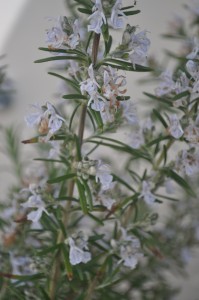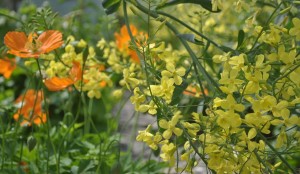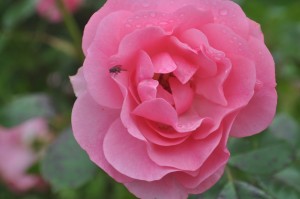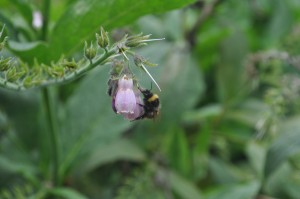Kim Stoddart gets up close and personal with all pollinators great and small…
Have you ever stopped and listened to the musical sound a bee makes as it works a flower head? Or looked at a wasp as it chews tiny bits of wood off your fence or garden furniture? Wasps may have a somewhat chequered reputation but they are also incredibly useful. They clear the aphids off my plum trees every year without fail. Also, alongside flies, beetles, butterflies, moths and of course bees, they help to make up the 1,500 species of insects that diligently pollinate our plants for us.

As my local bee expert, Sam Cooper from New Quay Honey Farm explained to me when I interviewed him recently around Bees’ Needs Week; “A pollinator report came out about a year ago and there was a lot of confusion but what was clear is that it’s not just the honey bee that’s suffering. There is a crisis in the insect world in general. This is because the wild pockets of land they relied on have gradually through the years been turned over to agriculture.”
If you grow a bit of your own food or have plants you’re helping a tad already and there are lots of easy and enjoyable ways to do that bit more to give these essential pollinators the food and shelter they so urgently need.
- First off, go a bit wilder
I’ve written before about the many benefits of letting go and getting into a wilder form of gardening and really, I can’t recommend it enough. I think too often the garden is seen as another room and kept almost clinically clean as a result:

“I went to Sussex recently and I saw someone actually hoovering their garden” Sam Cooper told me “They were using something like a leaf blower that went in reverse and they were sucking everything up. It’s no wonder there are no insects in the world if that’s what you’re doing to your garden”.
Yet letting nature in to lend a helping hand, rather than trying to fight it out is incredibly rewarding and will save you no end of time. Even a small patch of stinging nettles or wild flowers growing undisturbed at the back of the garden can provide a haven (food and breeding ground) for a variety of insects including ladybirds, butterflies and moths.
- Where you can, grow more flowers, shrubs and trees

It’s good to try and include a variety of plants and to have those that flower at different times throughout the year but they don’t always need to be plants that are specifically bought in. Wild flowers can be delightful – why not let them move in and add to the variety already in your garden. The Welsh poppies, aquilegias and red campion that have moved in and made my garden their home are now amongst some of my favourites. They self-seed and pop up where they fancy each year adding a welcome splash of colour and food source for pollinators.
Additionally why not let some of your crops go to seed even if you don’t plan to save from them and see how popular your garden becomes. In particular brassica and leek flower heads attract a wide range of beneficial insects and truly make a garden come alive.
If you don’t have a lot of space, then even some thyme, rosemary or lavender in a window box will lend a helping hand as well as supplying your kitchen with useful herbs.
- Cut grass less often
I also say let dandelions and daisies move in. They don’t need to take over but a longer lawn scattered with them is a beautiful sight to behold and the dandelion in particular is a godsend to bees early in the year when other nectar sources are scarce.
- Try not to disturb insect nests and hibernation spots

If you garden by hand you’re much more inclined to be aware of and see areas where insects might be. You can also actively create areas for them by leaving dead trees where they stand or building wood piles for insects to hide and hibernate in. A compost pile is also an attractive host for bees, and ground beetles will move in readily as long as they have something to safely hide under.
- Think before using pesticides
I’d say a more naturally-minded garden doesn’t need them at all, ever. Please don’t use them – they nuke everything and there are plenty of much kinder options available. Plus, if you attract a wide range of nature’s little helpers into your plot they can help prevent a build-up of problems in the first place. Also I’d highly recommend a mix and match style of companion planting, rather than growing fruit and vegetables or plants in uniform blocks. It’s more interesting and delicate plants are afforded greater protection as a result.
Of course we shouldn’t forget birds and bats as they also do their bit and really a pollinator is anything that lands on a plant. As Cooper explains; “ Human evolution has conspired that most plants that actively require pollination depend on the larger scale pollinators such as the honey bee but really any insect can do this. “
So it seems they all have their part to play. As indeed do we…
A version of this article first appeared in the Guardian around National Bees’ Needs Week (9 -17th July)
